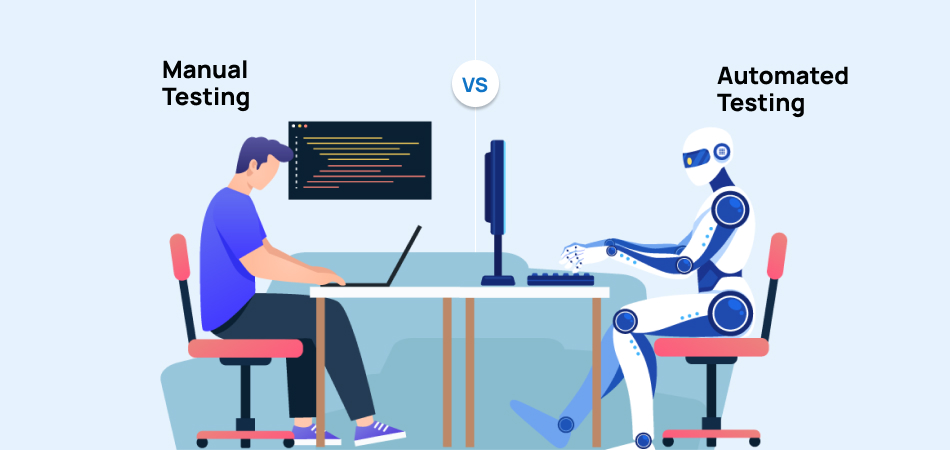Artificial Intelligence (AI) is revolutionizing every industry it touches, and web development is no exception. With its ability to analyze data, automate tasks, and personalize user experiences, AI is reshaping the way websites are built and maintained.
It’s crucial to take the effects of greater automation into account when analyzing how AI will affect web development. Businesses can boost production and efficiency while lowering the risk of error associated with manual procedures by implementing automated technologies. This can enable them to accomplish their objectives—from improving performance to optimizing user experiences—more quickly and successfully than in the past.
In this article, we’ll explore the profound impact of AI in web development field, uncovering the opportunities it presents and the challenges it brings. But first, let’s see how AI has impacted Web Development.
How has AI changed web development?
1. Enhanced User Experience (UX):
- Personalization: AI analyzes user data (clicks, browsing patterns, etc.) to personalize website content and design elements. This tailors the experience to each user’s preferences, improving engagement and conversion rates.
- Chatbots and virtual assistants: AI-powered tools provide intelligent chatbots and virtual assistants, offering 24/7 customer support and enhancing user experience. According to Chatbot Magazine, AI-powered chatbots are expected to handle 85% of customer interactions by 2030.
- Accessibility: AI can help create more accessible websites by automatically generating captions for videos and transcripts for audio content.
2. Streamlined Development Process:
- Automation: Repetitive tasks like code generation, testing, and deployment can be automated using AI, freeing up developers’ time for more complex tasks.
- Faster development: Automation reduces development time, allowing projects to be completed quicker and more efficiently.
- Reduced errors: AI tools can help catch bugs and errors in code, leading to cleaner and more stable websites.
3. Smarter Design:
- AI-powered design tools: Tools analyze existing designs and user preferences to suggest layouts, color schemes, and typography, streamlining the design process.
- Responsive design: AI can help create websites that automatically adjust to different screen sizes, ensuring optimal viewing experiences across devices.
- A/B testing: AI can optimize A/B testing by analyzing data and suggesting which website variations perform better.
4. Improved Security:
- AI-powered threat detection: AI can identify and analyze potential security threats in real-time, protecting websites from cyberattacks.
- Fraud prevention: AI can analyze user behavior to detect and prevent fraudulent activity online.
5. Democratization of Web Development:
- AI-powered website builders: These tools allow even non-coders to create basic websites, making web development more accessible.
Important to note that:
- AI is not replacing web developers, but rather augmenting their capabilities.
- Ethical considerations and potential bias in AI algorithms need careful attention.
Opportunities
- Enhanced User Experience: AI-powered chatbots and virtual assistants are transforming website user interactions. These intelligent systems can provide personalized recommendations, answer customer queries in real-time, and guide users through complex processes, ultimately enhancing user satisfaction and engagement.
- Data Analysis and Insights: AI algorithms can analyze vast amounts of user data to uncover valuable insights about user behavior, preferences, and trends. Web developers can leverage this data to optimize content, layout, and functionality, leading to more effective websites tailored to the needs of their target audience.
- Automated Content Generation: AI-driven content generation tools can automate the creation of website content, from blog posts and product descriptions to email newsletters and social media updates. This not only saves time and resources for web developers but also ensures a steady stream of fresh and relevant content for website visitors.
- Predictive Analytics: AI-powered predictive analytics can anticipate user needs and preferences based on past behavior, enabling web developers to deliver personalized experiences in real time. From recommending products to predicting churn rates, predictive analytics can drive conversions and retention on websites.
- Improved Accessibility: AI technologies such as natural language processing (NLP) and speech recognition are making websites more accessible to users with disabilities. Voice-controlled interfaces and screen readers powered by AI are breaking down barriers and providing equal access to information and services online.
Challenges
- Data Privacy and Security: As AI systems rely heavily on data, concerns about data privacy and security are paramount. Web developers must ensure that user data is handled responsibly, with robust security measures in place to protect against breaches and unauthorized access.
- Algorithm Bias: AI algorithms are susceptible to bias, reflecting the biases present in the data they are trained on. This can lead to unfair treatment and discrimination, particularly in areas such as hiring, lending, and content recommendations. Web developers must be vigilant in identifying and mitigating algorithmic bias to ensure fair and equitable outcomes.
- Technical Complexity: Implementing AI-powered features on websites requires specialized technical expertise and resources. From selecting the right AI algorithms to integrating them seamlessly into existing systems, web developers face challenges in navigating the technical complexity of AI implementation.
- Ethical Considerations: The use of AI in web development raises ethical questions regarding transparency, accountability, and the impact on society at large. Web developers must grapple with ethical dilemmas surrounding data usage, algorithmic decision-making, and the potential displacement of jobs by automation.
- User Acceptance and Adoption: Despite the potential benefits, not all users may be comfortable interacting with AI-powered systems on websites. Concerns about privacy, trust, and the loss of human touch may hinder user acceptance and adoption of AI-driven features, posing challenges for web developers in designing intuitive and user-friendly experiences.
Conclusion
The impact of AI in the web development industry is profound, offering a wealth of opportunities to enhance user experiences, optimize workflows, and unlock new capabilities. However, these opportunities come with a set of challenges that web developers must navigate carefully, from ensuring data privacy and addressing algorithmic bias to grappling with ethical considerations and fostering user acceptance. By embracing AI responsibly and ethically, web developers can harness its transformative power to build smarter, more engaging, and inclusive websites for the future.



